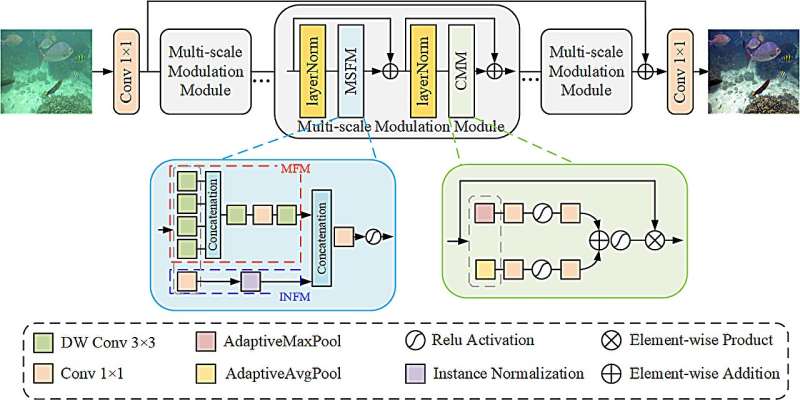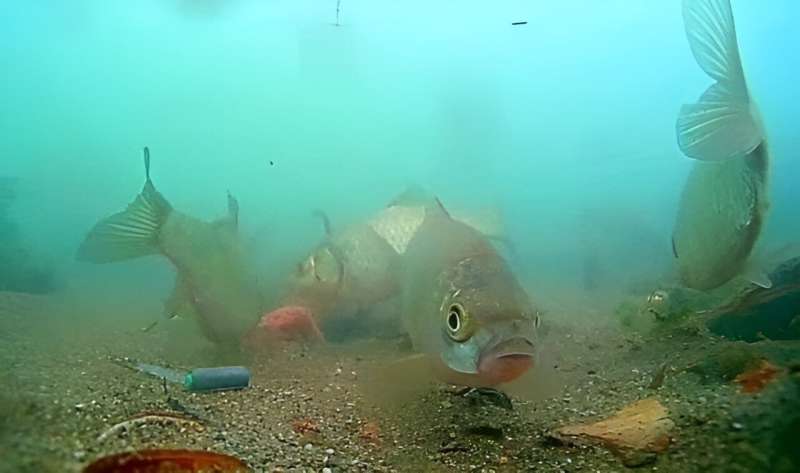This article has been reviewed according to Science X's editorial process and policies. Editors have highlighted the following attributes while ensuring the content's credibility:
fact-checked
trusted source
proofread
Researchers develop a multiscale feature modulation network for advanced underwater image enhancement

Researchers led by Prof. Wang Rujing from the Hefei Institutes of Physical Science of the Chinese Academy of Sciences developed a simple and effective multi-scale feature modulation network for underwater image enhancement.
Their study, published in the Journal of King Saud University—Computer and Information Sciences, addresses the challenge of improving image quality in underwater environments while considering the limitations of devices with low memory and computational power.
High-quality images are important for many underwater applications, including fisheries monitoring and environmental and species conservation. However, most deep learning-based underwater image enhancement networks are not suitable for underwater equipment platforms with limited memory and computational power. This conflict poses a significant challenge in improving the quality of underwater images.
The approach in this study, which was called a simple yet effective multi-scale feature modulation network (MFMN), achieves a better trade-off between model efficiency and reconstruction performance.
"The key parts are the multi-scale modulation module and the channel mixing module," said Dr. Wang Liusan, a member of the team.
By incorporating the multi-scale modulation module similar to a visual transformer, the network extracts features from the input image and dynamically selects representative features in the image space.

To address the lack of channel feature information, a channel mixing module is introduced to enhance the spatial perspective.
Experimental results show that the MFMN method significantly reduces the network parameters compared to existing techniques, making it 8.5 times smaller. Despite its smaller size, the method achieves similar performance at lower computational cost.
These results have promising implications for applications such as underwater fisheries monitoring and environmental conservation, according to the team.
More information: Shijian Zheng et al, A Multi-scale feature modulation network for efficient underwater image enhancement, Journal of King Saud University—Computer and Information Sciences (2023). DOI: 10.1016/j.jksuci.2023.101888
















